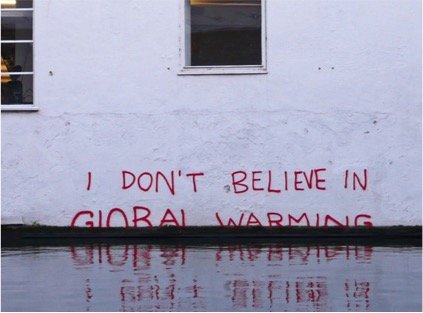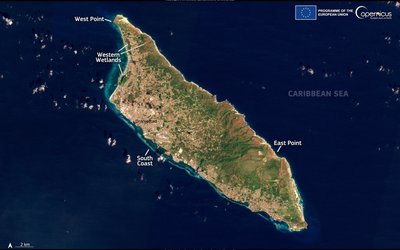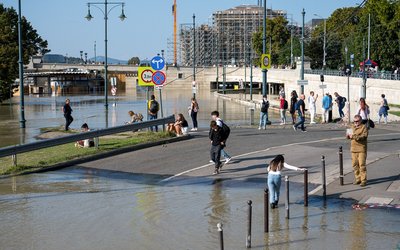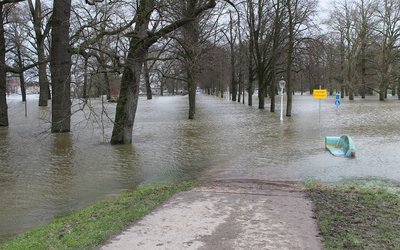
Climate change denial by the artist Bansky (photo: Duncan Hull, www.flickr.com)
A clear climate signal
The seasonal timing of river floods across Europe has been changing since 1960. This was concluded from a consistent pan-European assessment of observed flood seasonality trends between 1960 and 2010, the first evaluation of how climatic changes are influencing flood regimes at the scale of the entire European continent. The assessment was based on a database that pools flood records over the period 1960-2010 from more than 4000 riverine gauging stations across 38 European countries. The results highlight the existence of a clear climate signal in flood observations at the continental scale.
Earlier floods northeastern and western Europe
River floods occur earlier throughout northeastern and western Europe. Warmer temperatures have already led to earlier spring snowmelt floods throughout northeastern Europe. Sustained winter rainfall led to earlier soil moisture maxima (saturated soils) and thus to earlier winter floods in western Europe. The time shifts are quite large. Compared with the 1960s floods now occur more than 8 days earlier in areas of northeastern Europe (southern Sweden, the Baltics), at 50% of the gauging stations in this region. In western Europe, along the North Atlantic coast from Portugal to England, 50% of the gauging stations show a shift toward earlier floods by at least 15 days since the 1960s. In fact, 25% of the gauging stations in western Europe show earlier floods by even more than 36 days since the 1960s.
Later floods around the North Sea and parts of the Mediterranean coast
River floods occur later around the North Sea and some sectors of the Mediterranean coast. According to the authors of this study this is due to delayed winter storms associated with polar warming. Around the North Sea (southwestern Norway, the Netherlands, Denmark, and Scotland), 50% of the gauging stations show a shift toward later floods by more than 8 days since the 1960s. In some parts of the Mediterranean coast (northeastern Adriatic coast, northeastern Spain), 50% of the gauging stations show a shift toward later floods by more than 5 days since the 1960s.
Important results
These results are important. We know that the intensification of the water cycle due to a warming climate is projected to change the magnitude, frequency, and timing of river floods. However, the identification of a large-scale climate change signal in flood observations has been hampered by the existence of many processes controlling floods (including precipitation, soil moisture, and snow), by non-climatic drivers of flood change (such as land use change and river training), and by the inconsistency of data sets and their limited spatial extents. Use of the seasonal timing of floods as a fingerprint of climate effects on floods may be a way to avoid some of those complications, the authors of this study stress.
Blöschl et al., 2017. Science 357: 588-590.








